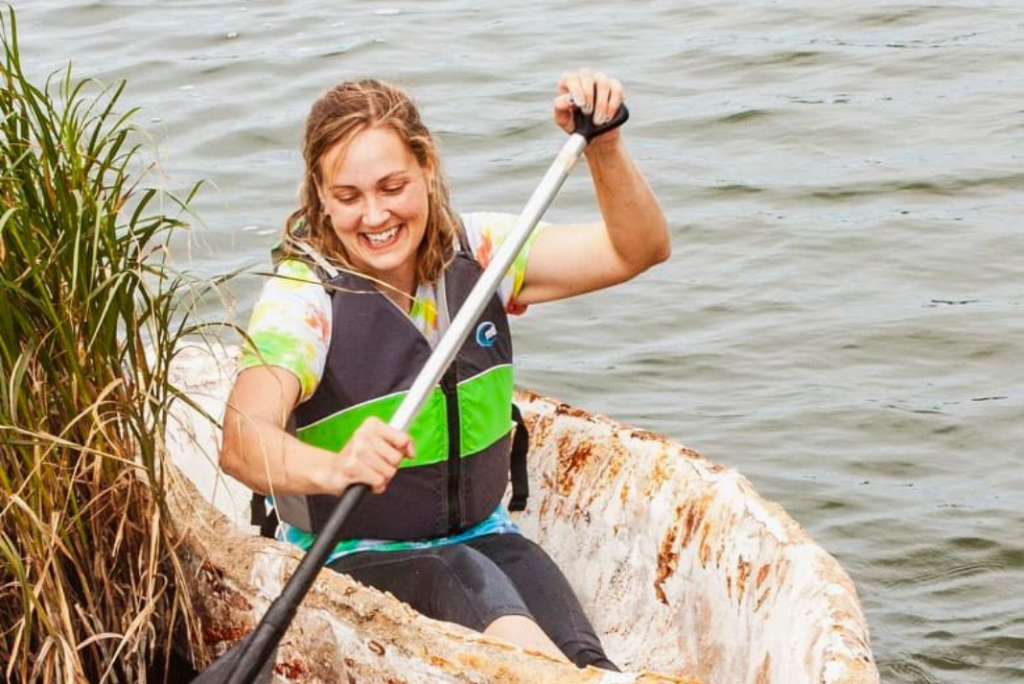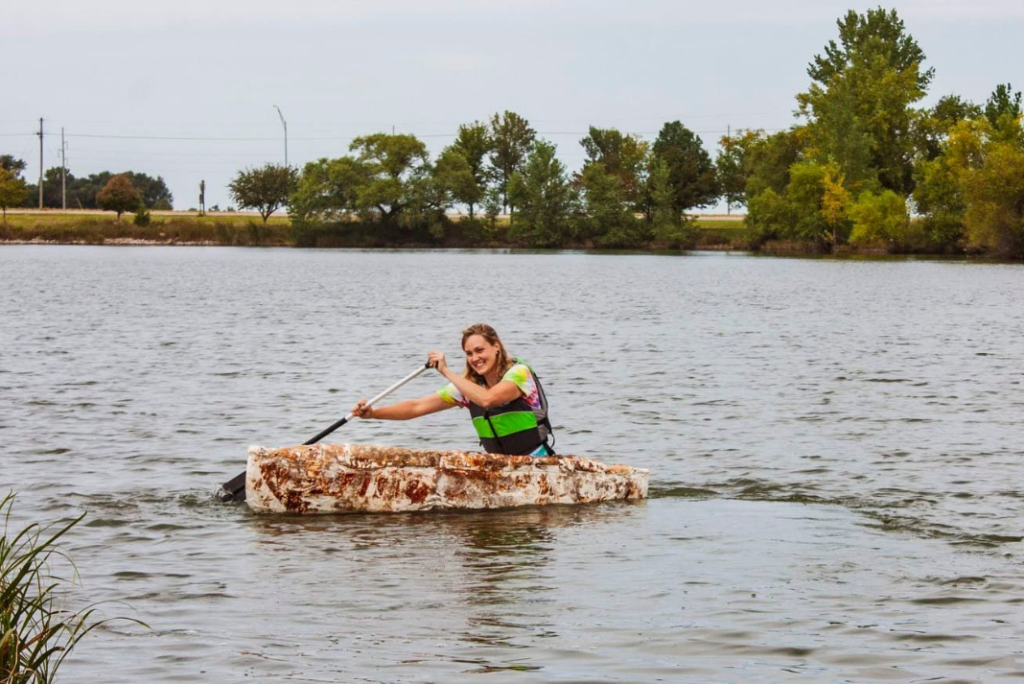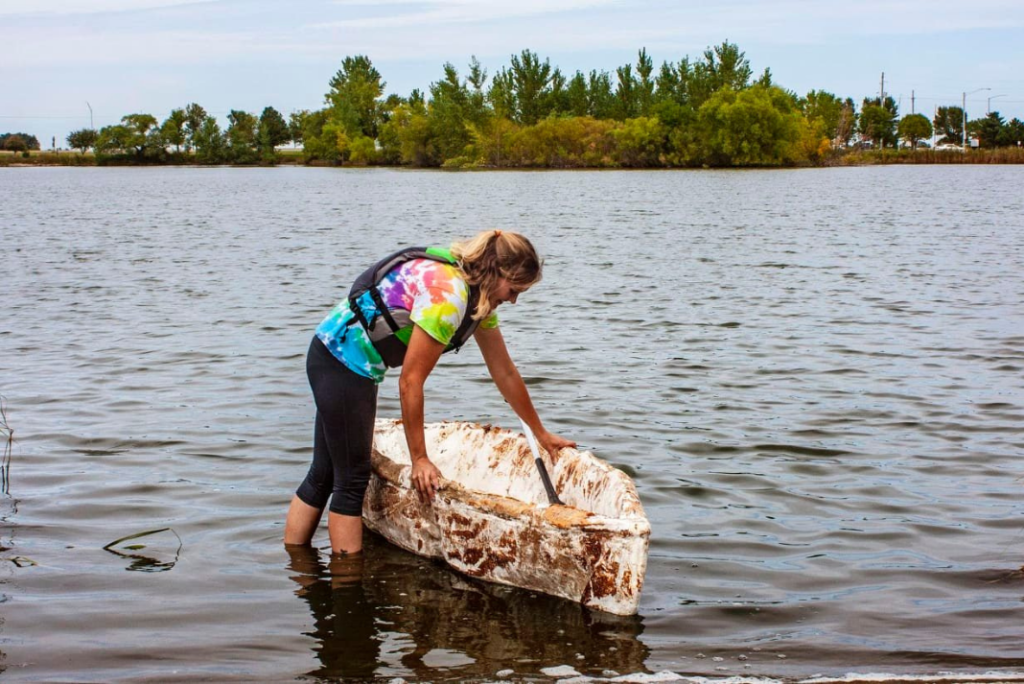Products You May Like
Student Katy Ayers first showcased her now-viral mushroom canoe at the Nebraska State Fair in 2019. She was meticulous in its unveiling; she waited until the show was over before launching it on the lake, on the off-chance it failed.
The Columbus University graduate couldn’t have known at the time just how much of an abounding success it would become. Despite what you might think, the aptly named “Myconoe” (a mashup of “canoe” and “myco”— a greek root for fungus) wasn’t simply a gimmick with intentions of garnering internet popularity.

Ayers created her Myconoe to demonstrate the boundless possibilities of a unique organism that is often thought of as a simple dinner ingredient. “Mushrooms are here to help us—they’re a gift,” Ayers told NBC. “There’s so much we can do with them beyond just food; it’s so limitless. They’re our biggest ally for helping the environment.”
We caught up with Ayers to take a closer look at the vessel’s durability and dig a little deeper into the “watertight” claim.
What inspired you to undertake this project?
I was inspired by an English assignment to come up with a problem, then write a persuasive synthesis illustrating how I would solve the problem. It was while I was researching for this project that I came across the documentary Super Fungi by Anne Rizzo. Since then, I think about fungi daily.
How long did it take for the mycelium to grow to a satisfactory size and shape?
Because we cultured and expanded the mycelium before we used it, the fungus only took one week to grow to shape after it was added to the mold. It grew through my paper mache molds and the hammock it was resting in during that week.
We’re no fungi experts, but we assume mushrooms don’t naturally grow into canoes. What was your method of shaping it?
After looking into the amazing people who started fashioning things like packaging and furniture, I realized I needed to make a mold to get the fungus to grow into boat shape. I asked around at different businesses, quickly realizing that I needed to think more economically. That’s when I decided to paper mache the molds.

Can you eat it–or even, have you tried eating it?
The fungus of choice is a commonly used medicinal mushroom, often referred to as Reishi or Lingzhi in Asia. Because it is such a hard bracket fungus, I prefer to consume it as a tea or tincture.
So, what was it like to paddle?
It is far more stable than I ever expected! The first time I took it out, I fully expected to flip. But it was perfect… except it could have used a backrest.

It’s been described as “watertight.” Water didn’t seep through at all?
No water will ever seep through, but the fungus does not want to drown, so it only allows as much water as it needs to pass through its “skin.” Once the fungus absorbs the water, it is busy using it to grow even more. For example, after an hour in the water, the boat went from 102 lbs 2 oz to 102 lbs 4 oz. After a five-hour float, we found the weight gain was less than 4 oz total.
Can we expect any future mushroom builds from you?
I have three notebooks full of different ideas for mushroom builds! I envision myself using fungi to help create a more sustainable future. Currently, I am focused on solitary bee and wasp conservation using fungal habitat.
